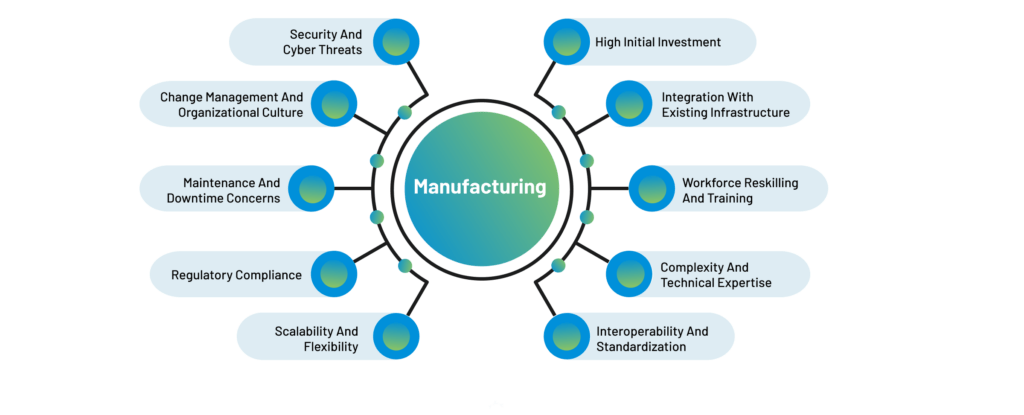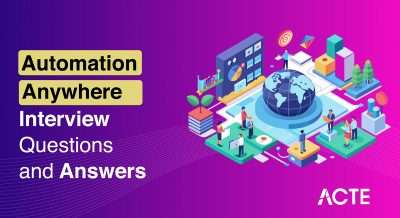
- Introduction to Web Developer Role
- Types: Frontend, Backend, Full Stack
- Key Skills Required
- Common Technologies Used
- Responsibilities of a Web Developer
- Tools and Frameworks Used
- Learning Path for Beginners
- Web Developer vs Software Engineer
- Freelancing vs Full-Time Roles
- Salary Trends and Career Scope
- Certifications and Courses
- How to Become a Web Developer
- Conclusion
Introduction to Hyper Automation
Hyper Automation represents an advanced evolution of traditional automation, combining technologies such as artificial intelligence (AI), machine learning (ML), and robotic process automation (RPA) to handle complex business processes that were previously deemed too intricate for automation. Unlike basic automation, which is focused on repetitive tasks, Hyper Automation integrates entire workflows and business operations, effortlessly blending human contributions, robotic processes, and AI capabilities. This method enhances efficiency, productivity, and agility by allowing businesses to scale automation across more advanced workflows. For those seeking to enhance their knowledge in this field, SoftwareTesting Training offers valuable insights into automation and testing methodologies. With the help of AI and ML, companies can refine decision-making, boost cognitive tasks, and elevate overall performance, adapting seamlessly to shifting demands. In the age of digital transformation, Hyper Automation stands as a crucial driver for businesses aiming for efficiency, innovation, and competitiveness, optimizing operations, reducing errors, and enhancing scalability. It empowers organizations to concentrate on more valuable tasks, promoting growth and ensuring competitiveness in a rapidly changing digital world.
Evolution of Automation Technologies
The journey began with basic task automation through simple scripts and macros, which helped streamline routine activities. As technology evolved, robotic process automation (RPA) was introduced, enabling businesses to automate repetitive, rule-based tasks without the need to alter or disrupt existing IT systems. This allowed organizations to increase efficiency while maintaining their current infrastructure. As the demand for smarter decision-making grew, the integration of artificial intelligence (AI) and machine learning (ML) became crucial. These technologies brought intelligent automation into the fold, enhancing capabilities with cognitive technologies such as natural language processing (NLP) and machine vision, enabling systems to better understand and process complex data. Building on these advancements, Hyperautomation emerged as a powerful solution, extending beyond simple task automation to encompass the orchestration of entire business processes. For those looking to explore automation in a leading CRM platform, Automation Tools in Salesforce offers comprehensive solutions. Hyperautomation integrates not just automation but also analytics, optimization, and self-healing capabilities, offering businesses a more adaptive and intelligent approach to managing operations. This shift allows organizations to automate entire workflows, enhance decision-making, reduce errors, and improve overall performance across various functions, thus providing significant value in the digital age.

Key Components of Hyper Automation
Hyper Automation integrates several components, including:
- Robotic Process Automation (RPA): Automates repetitive tasks.
- Artificial Intelligence (AI): Enables decision-making and cognitive tasks.
- Machine Learning (ML): Allows systems to learn and improve without explicit programming.
- Process Mining: Analyzes business processes to find automation opportunities.
- Business Process Management (BPM): Manages and improves business workflows.
- Intelligent Document Processing (IDP): Automates data extraction from documents.
- Integration Platforms as a Service (iPaaS): Connects different systems and applications. Each component is crucial in creating a flexible, intelligent, and scalable automation environment.
- Developing and maintaining websites and web applications
- Writing clean, efficient, and scalable code
- Testing and debugging applications
- Collaborating with designers, product managers, and other developers
- Ensuring sites are accessible and optimized for SEO
- Integrating APIs and third-party services
- Updating website content and implementing new features
- Optimizing sites for performance and speed
- Complexity: Integrating multiple technologies requires advanced expertise.
- Change Management: Employees may resist changes, fearing job loss.
- Security Risks: Automated systems, if not properly secured, can become targets for cyberattacks.
- Data Quality: Poor data can lead to incorrect automation outcomes.
- Regulatory Compliance: Automated processes must adhere to industry regulations.
- High Initial Investment: Setting up a hyper automation ecosystem can be expensive. Organizations
- Banking and Finance: Automating loan processing, KYC compliance, and fraud detection.
- Healthcare: Managing patient records, billing, and appointment scheduling.
- Retail: Optimizing inventory management, personalized marketing, and customer service.
- Manufacturing: Enhancing supply chain management, predictive maintenance, and quality control.
- Insurance: Automating claims processing, underwriting, and customer communication.
- Telecommunications: Managing network operations, billing, and customer support. Each industry leverages hyper automation to solve unique challenges, improve efficiency, and enhance customer experience.
- Low-Code/No-Code Development: Enabling non-technical users to create automation workflows. Intelligent Process Automation (IPA): Combining AI, RPA, and analytics for more intelligent automation.
- Hyper Automation as a Service: Offering hyper automation solutions via cloud-based platforms.
- Digital Twins: Creating digital replicas of business processes for simulation and optimization.
- Edge Automation: Processing data closer to the source, reducing latency.
- Autonomous Operations: Moving towards systems that manage and optimize themselves. These trends are shaping the next generation of automation, making it more accessible, intelligent, and integrated.
RPA vs Hyper Automation
Robotic Process Automation (RPA) primarily focuses on automating simple, rule-based tasks such as data entry, form processing, and other repetitive activities that do not require human judgment or complex decision-making. RPA excels in streamlining these high-volume, monotonous tasks, improving efficiency, and freeing up human resources for more value-added activities. On the other hand, Hyper Automation goes beyond the capabilities of RPA by integrating it with advanced technologies like artificial intelligence (AI), machine learning (ML), and others. This combination allows Hyper Automation to automate not just tasks but entire workflows, including decision-based activities. For those looking to enhance their skills in this field, SoftwareTesting Training provides valuable insights into automation and testing. It can predict outcomes, adapt to changing conditions, and continuously optimize processes, making it far more flexible and intelligent. While RPA remains an essential component of Hyper Automation, the latter’s scope is significantly broader, encompassing end-to-end automation with intelligent orchestration, which can manage complex business processes, optimize them in real-time, and enable businesses to operate with greater agility and efficiency.
Boost your confidence for interviews by reading this Automation Testing Interview Questions and Answers
Role of AI and ML in Hyper Automation
A web developer’s duties vary depending on their role, but generally include:
Advanced responsibilities may include mentoring junior developers, conducting code reviews, writing technical documentation, and contributing to open-source projects. In agile environments, developers may also participate in sprint planning, daily stand-ups, and retrospectives.
Want to lead in Automation Testing? Enroll in ACTE’s Automation Testing Master Program Training Course and start your journey today!
Challenges and Risks
Despite its advantages, hyper automation also brings challenges:

Tools and Technologies Involved
Hyper automation is supported by a diverse range of tools across various categories, each serving a specific purpose in the automation ecosystem. RPA platforms like UiPath, Automation Anywhere, and Blue Prism help automate repetitive, rule-based tasks, while AI and ML tools such as TensorFlow, IBM Watson, and Amazon SageMaker enable intelligent automation through advanced data analysis and machine learning capabilities. Process mining tools, including Celonis and UiPath Process Mining, allow businesses to analyze and optimize their processes for greater efficiency. Intelligent Document Processing (IDP) tools, such as ABBYY FlexiCapture and Kofax, enhance data extraction from documents, automating information capture and processing. For those interested in mastering key skills for automation, Essential Robotic Process Automation provides valuable learning opportunities. Integration tools like MuleSoft and Dell Boomi enable seamless connectivity between disparate systems, while workflow automation platforms like ServiceNow and Appian streamline and orchestrate complex business workflows. Additionally, analytics platforms like Power BI and Tableau provide valuable insights, helping organizations make data-driven decisions. Selecting the right combination of these tools depends on an organization’s specific needs, existing systems, and long-term objectives, ensuring a tailored approach to achieving successful hyper automation.
Use Cases Across Industries
Hyper Automation is transforming industries worldwide:
Implementation Strategy
Implementing hyperautomation requires a structured and methodical approach to ensure success. The first step is to assess processes by identifying those that are suitable for automation, often using process mining tools to gain insights into inefficiencies. Next, set clear objectives by defining business goals and key performance indicators (KPIs) that will guide the automation journey. Once objectives are established, choose the right technologies, select tools and platforms that align with your specific goals and automation needs. It’s essential to start small with a pilot project to test the effectiveness of the chosen tools and approach before scaling. For a deeper understanding of one widely used platform, recognized for reliability, What Is Blue Prism automation provides key insights into its capabilities and role in enterprise automation. Based on the feedback and results from the pilot, gradually expand automation initiatives to other areas of the business. Employee training is a crucial component, as investing in reskilling staff ensures they can effectively collaborate with automated systems. Finally, continuously monitor and optimize performance to ensure processes remain efficient and aligned with business objectives. A thoughtful, phased approach not only enhances the likelihood of success but also maximizes the return on investment (ROI) from hyper automation.
Future Trends in Hyper Automation
Hyper Automation is evolving rapidly, with several emerging trends:
Building a Career in Hyperautomation
As hyperautomation adoption continues to grow, so do the career opportunities in this field. Key roles include RPA Developer, responsible for building and managing bots that automate repetitive tasks; Automation Architect, who designs comprehensive end-to-end automation solutions; AI/ML Engineer, tasked with developing intelligent algorithms that enhance automation with cognitive capabilities; and Process Analyst, who identifies automation opportunities and works to optimize workflows for maximum efficiency. Additionally, Hyperautomation Consultants play a vital role in advising organizations on strategies and best practices for implementing automation successfully. Professionals with expertise in RPA platforms, AI/ML frameworks, process mining tools, and integration technologies are in high demand. For those exploring earning potential in the field, Robotic Process Automation Developer Salary offers helpful insights. Obtaining certifications from leading vendors like UiPath, Automation Anywhere, AWS, and Microsoft can significantly boost employability in this rapidly evolving field. Beyond technical expertise, soft skills such as problem-solving, adaptability, and strong communication abilities are equally valued. Hyperautomation presents a dynamic and rewarding career path for tech-savvy professionals eager to shape the future of work and contribute to transforming business operations.
Conclusion
In conclusion, Hyper Automation represents a significant evolution in the automation landscape, combining advanced technologies like RPA, AI, and ML to drive intelligent, scalable, and end-to-end automation solutions. By orchestrating entire workflows and integrating multiple technologies, Hyper Automation enables organizations to enhance efficiency, accuracy, and decision-making, while improving agility and competitiveness in a fast-changing digital world. Though it offers numerous benefits such as cost savings, operational efficiency, and improved employee satisfaction, implementing Hyper Automation also comes with its challenges, including complexity, change management, and security risks. By leveraging the right tools and following a structured implementation strategy, organizations can overcome these obstacles and successfully adopt Hyper Automation to achieve their business goals. As the demand for skilled professionals in this field grows, Hyper Automation opens up dynamic career opportunities across various industries, providing an exciting path for those looking to shape the future of work. For those looking to develop expertise in this field, SoftwareTesting Training offers valuable resources to enhance your skills. Ultimately, Hyper Automation is not just about improving processes; it is about transforming business operations to meet the demands of tomorrow’s digital economy.



